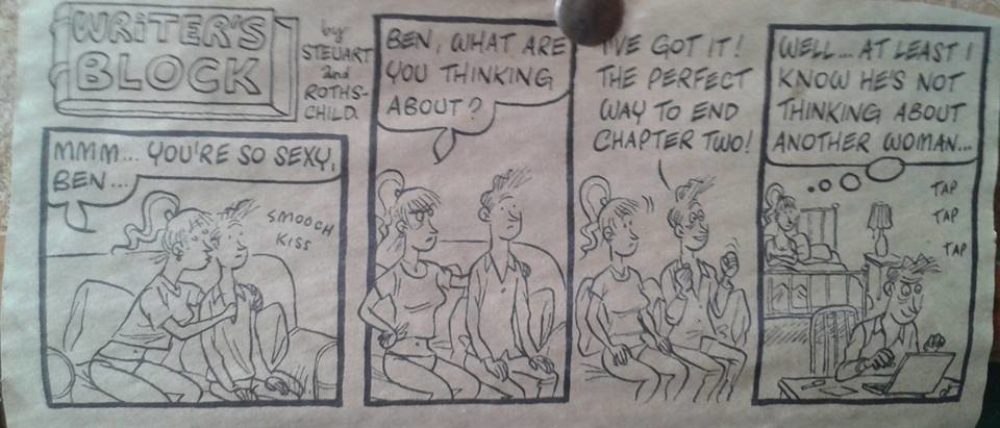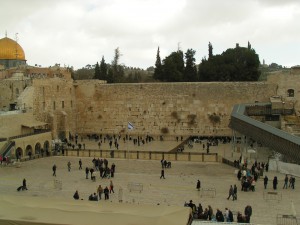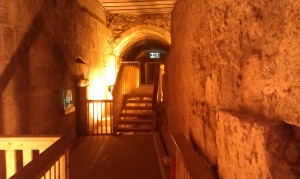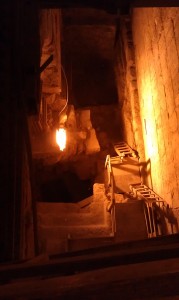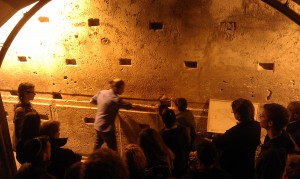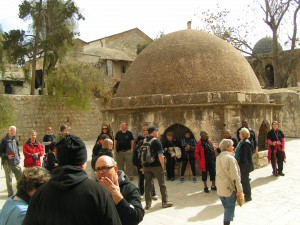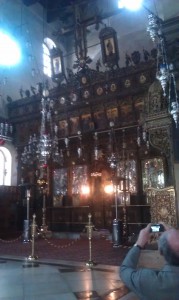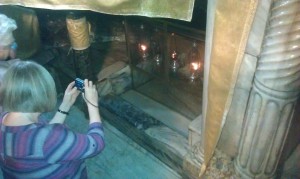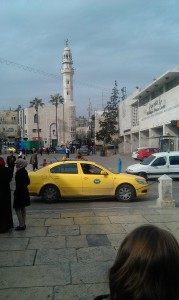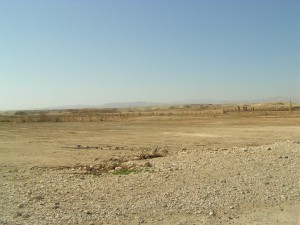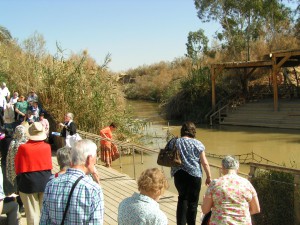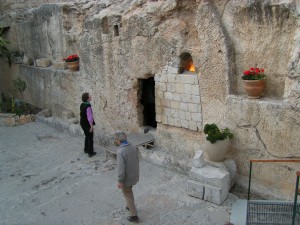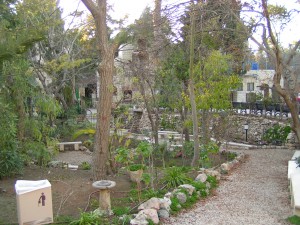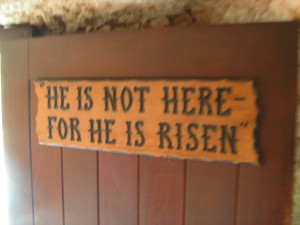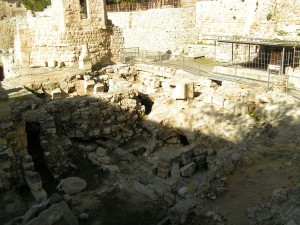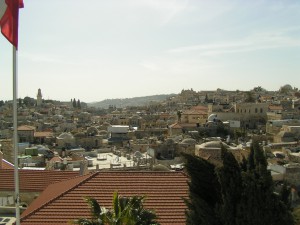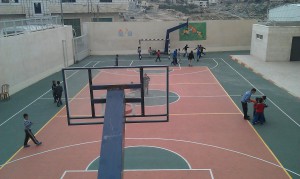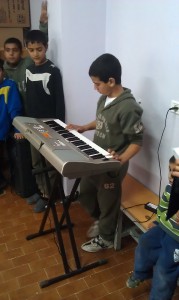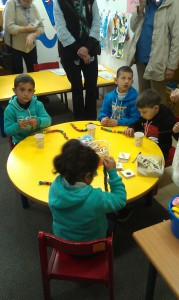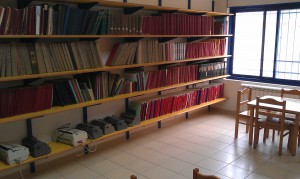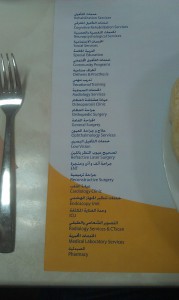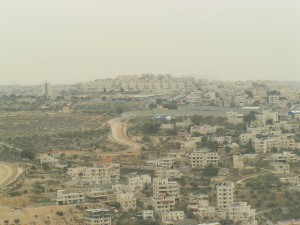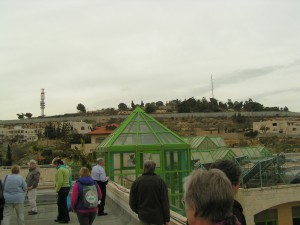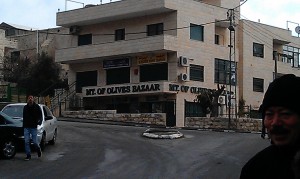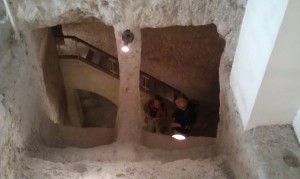The Temple Mount is an ambitious piece of landscaping by Herod the Great. Originally the site where it stands was on the eastern side of a quite deep valley. It consisted of a rising ridge of stone holding two small hills – in the Bible, “Mount” tends to mean anything between a few and several thousand feet high – on top of one of which Solomon had built the first temple a thousand years earlier. The second hill was a large lump of limestone in the north west corner of where the Temple Mount now is. (Jerusalem is all limestone. It would have looked very different and not half as nice if it shared the black volcanic basalt of Galilee.) The original temple had been ruined for centuries. Herod, installed by the Romans as king of the Jews, wanted to ingratiate himself with his adopted/foisted upon people and decided to rebuild the temple.
The original hill was too small for the temple he had in mind. How handy it would be, he mused, if it was all flat; if the land could sort of be raised up all around it …
And so he did. Or rather, that’s what his slaves did. The smaller lump of rock was dismantled and used as material for four massive walls enclosing the entire site in a slightly wobbly rectangle. The land level within the four walls rose and fell with the natural contours of the bedrock, so in some places the void could be filled in with rubble and in other places enormous vaults were built topped by a stone platform at the level of the new Temple Mount. The rock that the Dome of the Rock is built over is the natural tip of the original hill, poking slightly above the level of the platform. It has a cave in it. Gateways were built into the new walls with stairs leading up to the top. At the north west corner of the platform, the original source of the rock, the natural bedrock has been cut and dressed to look like it was built the same way as the rest of the Mount.
In short, the Temple Mount is a fascinating hodge-podge of caves, tunnels, walls and stone where archaeology and geology become interchangeable concepts. What’s not to love? It is still Jerusalem’s most obvious feature, and in its original form it must have looked stunning. Those limestone walls would have gleamed in the sun, the largest man-made object most people who saw them had ever beheld. No wonder the country bumpkin disciples marvelled at it.
Meanwhile, as if that wasn’t enough, I said that the Mount is on the eastern side of a valley – the Tyropoeon Valley, or Valley of the Cheesemakers, which of course isn’t meant to be taken literally but should be taken as a reference to any manufacturers of dairy products. As Jerusalem spilled into the valley (and frequently got reduced to rubble and rebuilt), so the floor level began to rise. More strong arches were built, more new ground levels were created on top of them, and then on top of them, and so on until you get to where we are now. The present day street level, defined by the Western Wall Plaza, is about halfway up the height of the original walls.
And all those empty spaces beneath? Well, you can get into them. You can go down and look at the base of those astonishing walls. So that is what we did.
Much better pictures than I was able to take can be found here. A very good guide started us off with a little model of pre-construction Jerusalem, showing how the Mount was put off, and he then led us off into the tunnels. Even when we thought we must be at the base of the walls – well, we weren’t. The picture on the right is looking vertically down at a Second Temple period staircase, and the floor is a long way down. We are already below the level of the Western Wall plaza. Big walls.
In the picture on the right the guide is showing one of the colossal blocks on the lower courses of the western wall. The bottom edge is level with his ribs; the top, left and right hand edges are some distance out of the sides of the picture. He set us an intellectual challenge: how were blocks that size ever lifted into place? Think about it; answer at the end.
A personal mission objective was achieved when we got to Warren’s Gate – one of the things I wanted to see as being unquestionably somewhere Jesus would have been. Sadly my camera wasn’t wide angle enough to capture it, and in a narrow tunnel you can’t step back to get a better view. At this point in the tunnel we are closest to the titular Rock above, which many believe to have been the site of the Holy of Holies within the Temple, So, many Jews come here to pray, and unlike the Western Wall plaza it isn’t gender segregated..
As you proceed northwards along the base of the wall you pass through (what is now) a buried quarry and a section of the old water tunnel. Now you’re in the bits where the bedrock has been carved to look like building blocks. Then you come to a bit where the carving and quarrying just – stops. It looks like the builders just downed tools and walked away one day. Why? Another puzzle. Maybe it was because Herod died. Maybe work was interrupted by the slight detail of the Romans destroying Jerusalem. Whatever the reason, the Mount was never properly finished, but it came pretty close.
Just before the end of the tunnel you come to the Struthion Pool, an underground reservoir. This was sort-of discovered in the nineteenth century by Charles Warren, in the best Victorian white man tradition of discovering things that people already knew perfectly well were there if only you bothered to ask. Warren conducted many of the first proper explorations of the Mount, before all that kind of thing became political and religious dynamite. Finding a pool, he naturally got into a boat and set off to find the other side. Finding a door there, he naturally knocked on it. It was opened by a very surprised and outraged nun from the convent above. The sisters then sealed off their end of the pool so that no more men could come a-knocking out of the darkness.
The Mount may have been a vanity project for Herod, but it served as the basis for the Temple, which was by no means perfect (cf. many parts of the Gospels) but was still the centre of a thriving community and somewhere that God could be found. And for all the religious gunpowder tension that still hangs around it, it is still a positive focal point of many lives. That’s quite a memorial for Herod, in the way that, say, the pyramids very definitely aren’t for their long-dead Pharaohs. And Jesus was there.
Okay, the answer to my little puzzle above: how those huge blocks were lifted? They weren’t. I said they were hacked out of a natural hill that was then enclosed by the walls, and they’re only on the lower courses of the walls. They were cut out of living bedrock, dressed, and dragged along, not up. Simple. Well, simpler.
